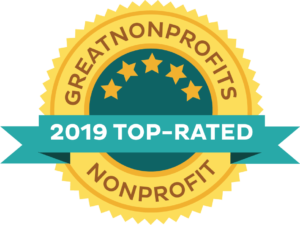Over 80% of released incarcerated individuals return to prison over a ten-year period.1
I first came across this harrowing statistic while watching a Youtube video during one of my typical homework procrastination sessions. As soon as I saw it, I knew I wanted to do something—but I didn’t know what.
Every senior at Irvington High School in Fremont, CA has to complete QUEST, a capstone project. Consisting of in-depth research papers, expert interviews, and community service, QUEST enables seniors to investigate and tackle social issues prevalent in our society. What I saw on Youtube that day was really a call to action, one that prompted me to choose recidivism—defined as the tendency of reincarceration for a released individual—as my QUEST topic.
One component of QUEST, called the civic action requirement, is a minimum of 10 hours of volunteering at an organization relevant to your chosen issue. For my civic action, I chose to volunteer at The Freedom to Choose Project (FTC) (and I’m so grateful they let me). But why FTC? To arrive at that answer, you’ll have to follow me through my research. My paper was ten pages long—I promise I’ll keep my summary short.
Researchers have identified some key causes for recidivism, from lower education levels to a lack of employment.2 Oftentimes, these causes are also consequences, thereby creating a ruthless cycle entrapping thousands of individuals.3 While the literature on the above contributing factors and effects is thorough, most authors often miss what some experts claim to be both the most important cause and consequence of recidivism. Yet one source I stumbled across on my research, which identifies this key causal factor, provides such multifaceted analysis of recidivism that I have to devote two entire paragraphs.
 The book Beyond Recidivism takes a deep dive into recidivism by compiling many studies on its various causal factors and consequences. Featuring thirteen different authors with extensive backgrounds in criminal justice, sociology, and political science, Beyond Recidivism is a treasure trove for anyone who wants a well-rounded understanding of the topic.
The book Beyond Recidivism takes a deep dive into recidivism by compiling many studies on its various causal factors and consequences. Featuring thirteen different authors with extensive backgrounds in criminal justice, sociology, and political science, Beyond Recidivism is a treasure trove for anyone who wants a well-rounded understanding of the topic.
In Beyond Recidivism, Professor of Criminology, Law and Society, Naomi Sugie, and sociological researcher Dallas Augustine, claim that a lack of psychological, social, and mental support is a key cause and consequence of recidivism. They further go on to argue that “emotional support may be a more beneficial aspect for [re]integration than specific material and informational exchanges,” citing findings in four independent studies (214).4 Thus, they conclude that “social support systems … provide individuals with validation and self esteem, which in turn equips individuals to handle stressful situations and crises” (199). When it comes to psychological predictors, Beyond Recidivism authors and Professors of Criminal Justice Thomas Lebel and Matt Richie describe how “one’s sense of hope and agency may be a key factor for an individual to be able to succeed after prison” (191). From my research, it seemed to me that the intangibles, such as mental and psychological effects, were definitely crucial causes and consequences of recidivism. To learn more, I decided to interview an expert.
I interviewed UCSB Professor of Psychology Dr. Jill Sharkey. She essentially corroborated everything I had read about in Beyond Recidivism. In terms of potential solutions, Sharkey claimed that the best solution would be focused on psychological and mental predictors. This support should “consist of voluntary mental and psychological support programs in prisons and enabling individuals who are incarcerated to link with and enroll in community-based organizations upon release.” Now, if that isn’t a description of FTC, and specifically its Reader program, I don’t know what is.
For my civic action, I chose to be a Reader with FTC. For me, the program was a mechanism to combat one of recidivism’s leading contributors—lack of access to psychological and mental support–while enabling me to improve the lives of others. After attending just four sessions, I can confidently say it’s already improved who I am as a person.
I remember being nervous on the day of my first Reading session as I logged onto the zoom call. The positive, welcoming, and warm community quickly put me at ease. A big focus of the “Growthwork” that our brothers and sisters on the inside were assigned was a quote by Viktor Frankl: “Between stimulus and response there is a space. In that space is our power to choose our response. In our response lies our growth and our freedom.” Time and time again, I witnessed frank and thorough responses to Growthwork questions that demonstrated mastery of the ideas surrounding Frankl’s words, from the time someone chose to calmly explain their situation instead of using violence, to the time someone chose to pursue a G.E.D. Time and time again, I tried to express how proud and excited I was by their work and actions. If it’s one thing every Reader strives to do, it’s to infuse their communication and feedback with compassion and understanding. I’m a firm believer that this approach works, because to quote prominent American psychologist Rollo May, “communication leads to community, that is, to understanding, intimacy, and mutual valuing.”
I cried when I read the last [Reader] feedback because I’m not use to any positive feedback;
I’m use to “you have to work on this, this, this, this, this, this and that
before we even consider you eligible to go free.”
– Guillermo, FTC program participant – California Men’s Colony (CMC)
But why does the Reader program have so much potential? Both the authors of Beyond Recidivism and UCSB Professor Dr. Jill Sharkey stress the importance of buffers when it comes to mitigating the impact of stressful situations. At the core of both the Reader program and FTC is the idea that in every scenario, we always have a choice. Thus, FTC directly combats both critical causal factors for recidivism, as well as some of its most devastating consequences: mental and psychological effects. The recent transition to online Reader sessions demonstrates the versatility of both the program and the organization’s leadership. I look forward to each month’s Reader session, and I hope to see you there too.

by Rithwik Narendra (FTC volunteer since 2021)
_________________________
1 Antenangeli, Leonardo and Matthew R. Durose. Recidivism of Prisoners Released in 24 States in 2008: A 10-Year Follow-Up Period (2008–2018). Bureau of Justice Statistics of the U.S. Department of Justice, Sep. 2021, pp.1-5, bjs.ojp.gov/BJS_PUB/rpr24s0810yfup0818/Web%20content/508%20compliant%20PDFs.
2 Lockwood, Susan, et al. “Racial Disparities and Similarities in Post-Release Recidivism and Employment Among Ex-prisoners with a Different Level of Education.” Journal of Prison Education and Reentry, vol. 2, no. 1, June 2015, pp. 16-31. VCU Scholars Compass, doi:10.15845/jper.v2i1.703.
3 Link, Nathan and Caterina Roman. “Longitudinal Associations among Child Support Debt, Employment, and Recidivism after Prison.” The Sociological Quarterly, vol. 58, no. 1, 2017, pp. 140-60, doi:10.1080/00380253.2016.1246892.
4 Leverentz, Andrea M., et al. Beyond Recidivism: New Approaches to Research on Prisoner Reentry and Reintegration. New York University Press, 2020.


